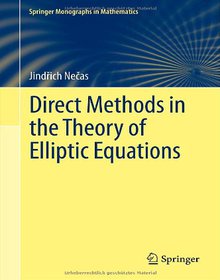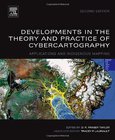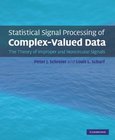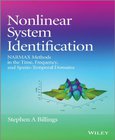Direct Methods in the Theory of Elliptic Equations

Book Details:
| Publisher: | Springer |
| Series: | Springer |
| Author: | Jindrich Necas |
| Edition: | 1 |
| ISBN-10: | 3642104541 |
| ISBN-13: | 9783642104541 |
| Pages: | 372 |
| Published: | Mar 05 2012 |
| Posted: | Mar 24 2015 |
| Language: | English |
| Book format: | |
| Book size: | 2.66 MB |
Book Description:
Neas book Direct Methods in the Theory of Elliptic Equations, published 1967 in French, has become a standard reference for the mathematical theory of linear elliptic equations and systems. This English edition, translated by G. Tronel and A. Kufner, presents Neas work essentially in the form it was published in 1967. It gives a timeless and in some sense definitive treatment of a number issues in variational methods for elliptic systems and higher order equations. The text is recommended to graduate students of partial differential equations, postdoctoral associates in Analysis, and scientists working with linear elliptic systems. In fact, any researcher using the theory of elliptic systems will benefit from having the book in his library.The volume gives a self-contained presentation of the elliptic theory based on the "direct method", also known as the variational method. Due to its universality and close connections to numerical approximations, the variational method has become one of the most important approaches to the elliptic theory. The method does not rely on the maximum principle or other special properties of the scalar second order elliptic equations, and it is ideally suited for handling systems of equations of arbitrary order. The prototypical examples of equations covered by the theory are, in addition to the standard Laplace equation, Lames system of linear elasticity and the biharmonic equation (both with variable coefficients, of course). General ellipticity conditions are discussed and most of the natural boundary condition is covered. The necessary foundations of the function space theory are explained along the way, in an arguably optimal manner. The standard boundary regularity requirement on the domains is the Lipschitz continuity of the boundary, which "when going beyond the scalar equations of second order" turns out to be a very natural class. These choices reflect the author's opinion that the Lame system and the biharmonic equations are just as important as the Laplace equation, and that the class of the domains with the Lipschitz continuous boundary (as opposed to smooth domains) is the most natural class of domains to consider in connection with these equations and their applications.
Download Link:
Related Books:
Developments in the Theory and Practice of Cybercartography
Applications and Indigenous Mapping
2nd Edition
Cybercartography is a new paradigm for maps and mapping in the information era. Defined as "the organization, presentation, analysis and communication of spatially referenced information on a wide variety of topics of interest to society," cybercartography is presented in an interactive, dynamic, multisensory format with the use of multimedia and multimodal interfaces. Developments in the Theory and Practice of Cybercartography: Applications and Indigenous Mapping examines some of the recent developments in the theory and practice of cybercartography and the substantial changes which have taken place since the first edition published in 2005...
Statistical Signal Processing of Complex-Valued Data
The Theory of Improper and Noncircular Signals
Complex-valued random signals are embedded in the very fabric of science and engineering, yet the usual assumptions made about their statistical behavior are often a poor representation of the underlying physics. This book deals with improper and noncircular complex signals, which do not conform to classical assumptions, and it demonstrates how correct treatment of these signals can have significant payoffs. The book begins with detailed coverage of the fundamental theory and presents a variety of tools and algorithms for dealing with improper and noncircular signals. It provides a comprehensive account of the main applications, covering detection, estimation, and signal analysis of stationary, nonstationary, and cyclostationary processes. Providing ...
Nonlinear System Identification
NARMAX Methods in the Time, Frequency, and Spatio-Temporal Domains
Nonlinear System Identification: NARMAX Methods in the Time, Frequency, and Spatio-Temporal Domains describes a comprehensive framework for the identification and analysis of nonlinear dynamic systems in the time, frequency, and spatio-temporal domains. This book is written with an emphasis on making the algorithms accessible so that they can be applied and used in practice.Includes coverage of:The NARMAX (nonlinear autoregressive moving average with exogenous inputs) modelThe orthogonal least squares algorithm that allows models to be built term by term where the error reduction ratio reveals the percentage contribution of each model termStatistical and qualitative model validation methods that can be applied to any model classGeneralised frequency ...
2007 - 2021 © eBooks-IT.org



